Berlin 4-Day Itinerary: The Best of Berlin in 4 Days

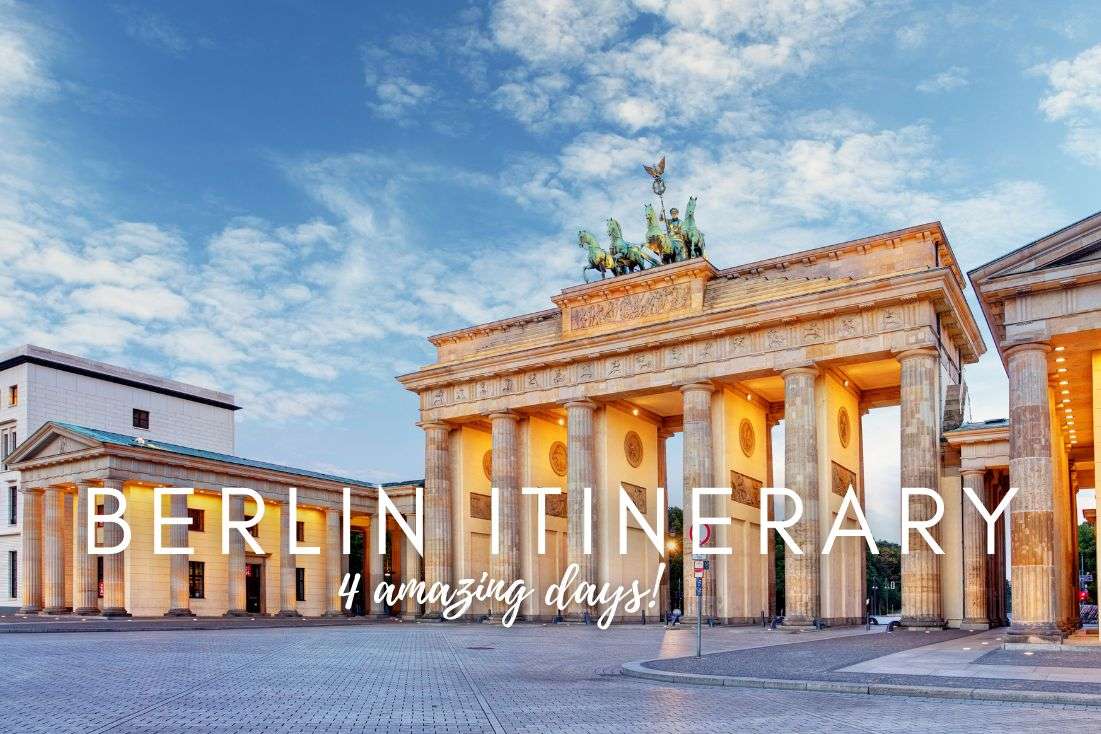
Yes, Berlin is my favorite German city. It's steeped in both intriguing and brutal history, with countless pivotal moments from World War II and the Cold War. For history enthusiasts, foodies, fans of modern architecture, and museum lovers (some of the best in the world are here!), Berlin is a must-visit destination.
As you might already know, I'm a history buff, so brace yourselves; during these 4 days, we'll explore every historical landmark and must-see museum in Berlin. I mention this upfront because if you're not into history, you’ve still got time to change your mind... If you're more into outdoor sightseeing, you may prefer other German cities like Nuremberg or Hamburg.
We drove to Berlin from Prague, a pleasant 4-hour journey. Some of the interesting sights are in the broader city, so you either have to love walking (a lot) or you can jump on a rental bike or scooter, which are both ideal for getting around Berlin. But if you can use a car, using it is the top option except for some spots in the city center where it’s impossible to park (I’ll specify which ones they are below). Berlin is a very car-friendly city with a good infrastructure, parking, and relatively low traffic.
Berlin is truly unique, incomparable to any other city. Its connection to numerous historical events makes it a paradise for history buffs. This city is a must-visit.
Where to stay in Berlin? KPM Hotel & Residences
I recommend staying at the new KPM Hotel & Residences. It has a great design (at least according to my great taste) and is large, modern, and ultra-clean. By modern, I mean even I had trouble navigating all the gadgets and electronic devices (even though I spent some time in Japan last year!). Wi-Fi is free but that's standard in Europe.
You might think I'm all about the details, but I want to highlight the room layout—it's clear some thought went into it. The air conditioning points towards the hallway, not the bed, unlike in many hotels. And the cherry on top? The breakfast. Top-notch. It even had kimchi, which I've always said is a game changer. No need to look further.
Day 1 of Berlin itinerary: Communism Landmarks
Caption: Day 1 of a 4-day Berlin itinerary aka the communism landmarks sightseeing (see it on Google Maps)
Main sites visited on day 1: Stasi Museum, East Side Gallery, Reichstag, Brandenburg Tor, Victory Column and Tiergarten, Jewish Memorial, Berlin Interactive Museum
Restaurant tips: MontRaw Restaurant | Eins44 | Byblos Restaurant Berlin
Hotel recommendations: KPM Hotel & Residences
Further reading: German Food and Drink Culture
Day 1, stop 1: Stasi Museum
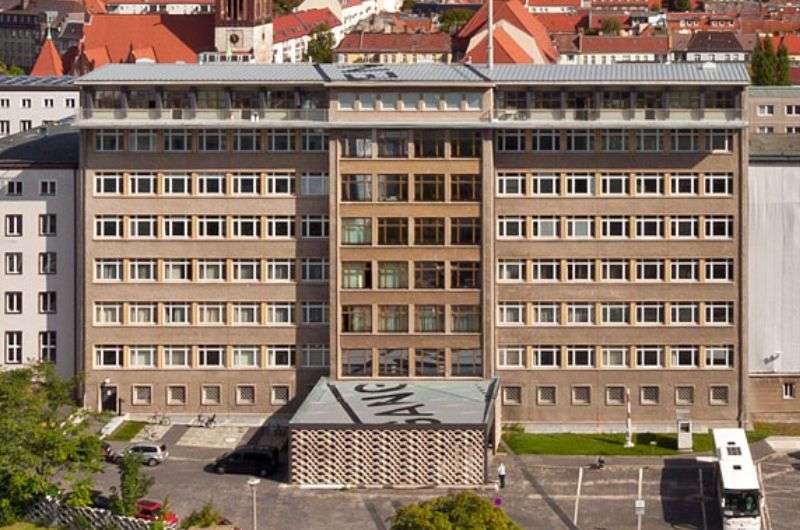
Distance from KPM Hotel & Residences: 13.3 km/8.3 mi, 37-min drive or 42 min by public transport
Time spent here: 1 hour
As I foreshadowed, you're going to be visiting a lot of museums in Berlin. The Stasi Museum is a bit outside of the city center, so it's easy to get there from your hotel by car, but public transport might be a better option, given the scarce parking in front of the building.
Now, for the history buffs and those who've heeded my call to delve into Germany's past, here's a crash course. Post-WWII, Germany split into West (BRD—Bundesrepublik Deutschland) and East (GDR—Deutsche Demokratische Republik), like a dramatic break-up, with the West getting cozy with the US, Britain, and France, while the East sulked under the Soviet's watchful eye.
West Germany was like the prodigal son, flourishing economically, while East Germany was the overlooked sibling, struggling under the Soviet shadow. It was so bad that by 1961, 2.7 million Germans had fled East Berlin.
Enter the Stasi, the East's answer to "How to win friends and influence people"—if by "winning" you mean spying, and by "influencing" you mean oppressing. Starting its reign of not-so-merry monitoring in 1950, the Stasi was East Germany's secret police, tasked with keeping tabs on anyone who dared to think differently. This nightmare wrapped up its operations in 1989, right alongside the fall of the Berlin Wall and the reunification of Germany.
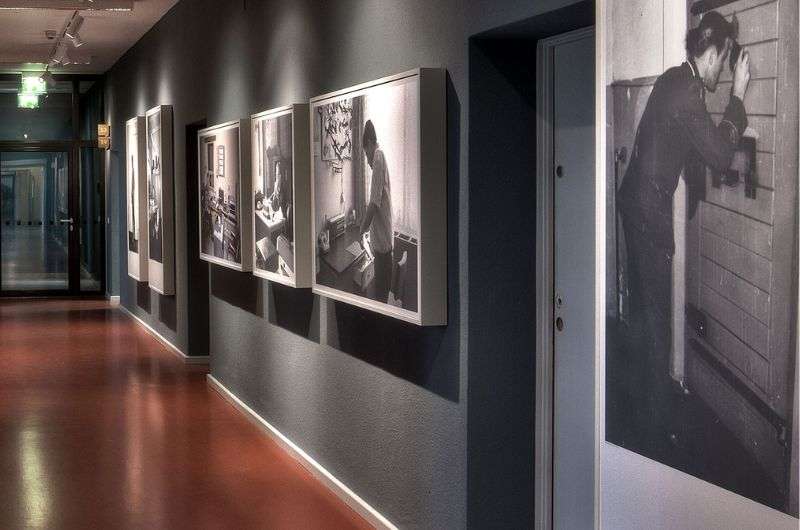
One of the exhibitions at the Stasi Museum
Stepping into the Stasi Museum, it's startlingly clear: this was no amateur hour operation. It was a full-blown, Orwellian-style surveillance state.
The guided tours, often led by whip-smart students, are an absolute must. They've got this uncanny ability to make the history pop with a blend of cold facts and chilling narratives.
The Stasi agents were the ultimate secret keepers, hiding their true colors even from their own families. They were everywhere, infiltrating every layer of society, including the underground. There was a secret agent on every corner.. At its peak, the organization boasted a staggering 180,000 members—that's about 1% of East Germany's population. It's like the Czech seniors say: those were the good ol’ days when everyone had an eye on everyone else. They even sifted through every piece of mail. Talk about dedication to the job!
And here's a nugget of irony for you: initially, these Stasi members weren't exactly the brightest bulbs. Fast forward to the end, and they're running the show from 50 office buildings in Berlin alone. It's a classic tale of rising through the ranks.
The stories you'll encounter are like threads from a dark, twisted story. Take 'Romeo', for example. His job? Stirring up trouble in marriages. It's like a real-life soap opera, except the stakes are painfully real. Just goes to show, history can be stranger—and darker—than fiction.
Good to know: Everything in the Stasi Museum is in English, so you can easily read and understand everything on your own if don’t want to hang out with a guide.
- Stasi Museum official website
- Open daily 10 am–6 pm, weekend and holidays 11 am–6 pm
- Tickets cost EUR 10
Day 1, stop 2: East Side Gallery
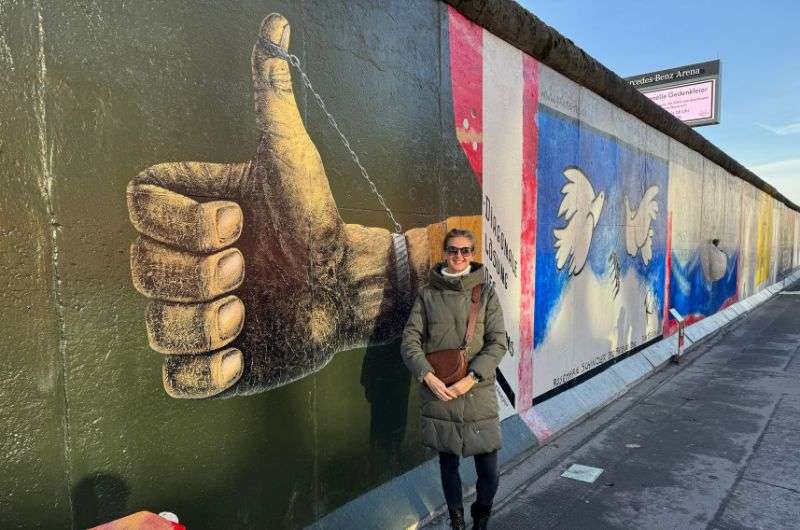
My girlfriend in front of the Berlin Wall
Distance from previous stop: 5.2 km/3.2 mi, 15-min drive
Time spent here: 20 min
The East Side Gallery is the longest surviving section of the Berlin Wall, preserved and transformed into an open-air gallery. You can take some nice photos there by the painted wall, but it's little more like a 20-minute stop—unless you want to spend half an hour contemplating each piece of art.
For those not up to speed on history, the Berlin Wall was an actual concrete wall that went up in 1961, separating West and East Germany. Its main purpose was to stop people from constantly fleeing East Germany. After the opening of the borders in 1989, people immediately began to tear it down, giving literal meaning to the “fall of the Berlin Wall”.
Even today, the difference between West and East Berlin is apparent at first glance. Of course, it's not as stark a contrast as when it was making history, but the architectural style remains.
Even today, you can spot the difference between West and East Berlin like a sore thumb. It's not the stark divide of yesteryear, but the architectural styles are like distant cousins—related, yet distinctly different. The West struts around in its modern get-up, while the East holds onto its historical threads, a living, breathing postcard from the past. A reminder of what you don’t want to relive.
Day 1, stop 3: Reichstag
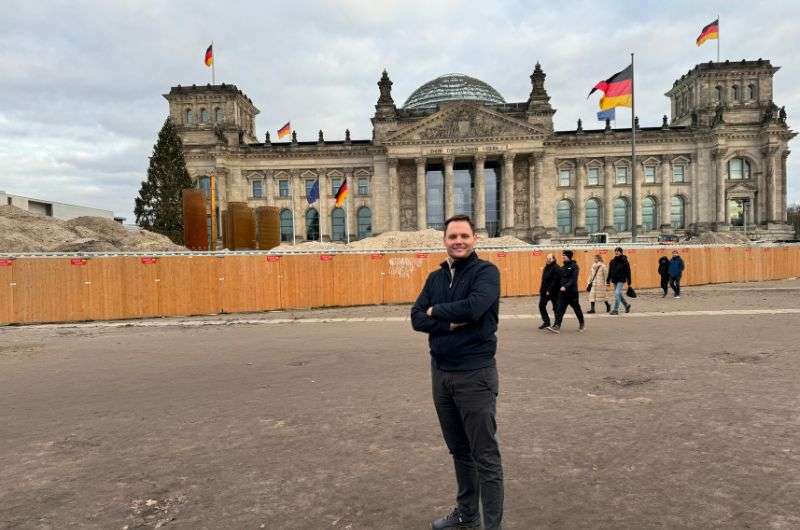
There was extensive work being done in front of the Reichstag Museum, so this photo is not really for Instagram. Anyway, I'm all about realistic depictions of my experiences
Distance from previous stop: 7 km/4.3 mi, 20-min drive or 25 min on a bike
Time spent here: 30 min
Your next stop on today’s itinerary is the Reichstag. This majestic structure is the reinstated seat of the German parliament in reunified Germany and a symbol of national unity.
The original Reichstag building was constructed between 1884–1894, designed by architect Paul Wallot. The building has played a significant role in German history, serving as the seat of the German parliament during several historical periods, and it has certainly seen its fair share of events. This includes the fire in 1933 and bombing during World War II.
Today, after several restorations, it is once again a truly beautiful building. Entry is free, and if you go up to the glass dome, you'll get a beautiful 360° view of the city.
Hack: If you want some great photos, a good spot is from the sides of the park.
Day 1, stop 4: Brandenburg Gate

When you say Berlin, everyone thinks of the Brandenburger Tor
Distance from previous stop: 1.5 km/0.9 mi, 7-min walk
Time spent here: 10 min
Just a hop, skip, and a jump away from the Reichstag stands the Brandenburg Gate, a giant among monuments. This behemoth is 26 meters (85 ft) of sheer awe, stretching 65.5 meters (214 ft) wide, and 11 meters (36 ft) deep. It's like the Hulk of historical structures. And yes, it's another big deal in Berlin's lineup of 'must-see' giants.
Throughout the twists and turns of history, the Brandenburg Gate has been a bit of a chameleon. In the Cold War era, it stood as a symbol of Berlin sliced in half. Post-1989, it flipped the script, becoming a cheerleader for reunification.
Brandenburger Tor is one of the most visited attractions in Berlin, so brace yourself for crowds. But realistically, it's a 10-minute stop. You look, say to yourself, "Yep, that's big," snap your obligatory tourist shots, and then it’s time to hit the road. "Been there, seen that, got the selfie" kind of place.
Day 1, stop 5: Victory Column (Siegessäule) and Tiergarten
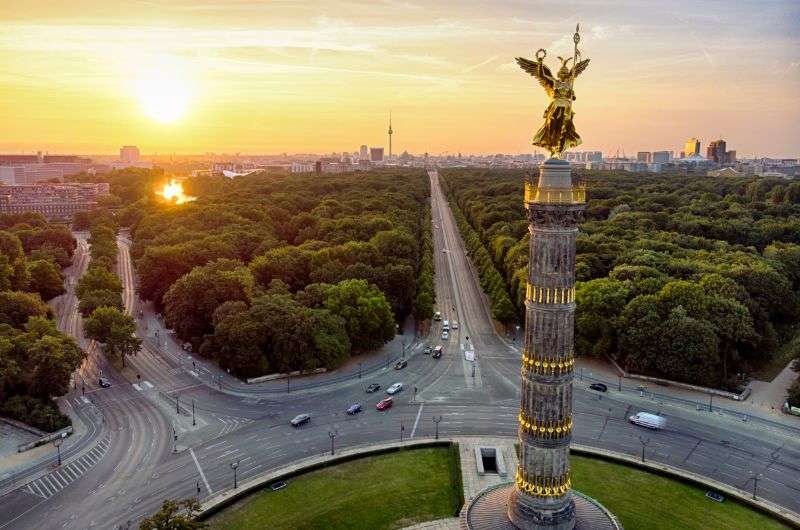
Take a stroll through Tiergarten Park and you will reach the Victory Column
Distance from previous stop: 3 km/1.8 mi, 26-min walk or 10-min drive or 6 min on a bike (traffic here is terrible, so often you'll get around faster on a bike than in a car)
Time spent here: 1 hour (including a walk through the park)
Next up on our tour through Berlin is the Victory Column, another historically significant monument that's a must-see. Conveniently, it's nestled in Tiergarten Park, so a leisurely stroll from the Brandenburg Gate brings you to this, yes, you guessed it, monumental landmark (seems like Berlin has a thing for enormity)!
Tiergarten is a city park smack in the heart of Berlin, giving off vibes similar to New York's Central Park. It's a typical green oasis amidst a concrete jungle where folks unwind post-work, spend time with their kids, go for runs, or just chill on the grass.
The Victory Column was erected to commemorate the Prussian victory in the Danish-Prussian War that took place between 1864 and 1867. But they didn't get around to actually building the column until 1873. The column stands at around 67 meters (220 ft) tall, with a bronze statue of Victoria, the Roman goddess of victory, perched on top.
Now, here's the kicker: Originally, the Victory Column was located on Unter den Linden in front of the Royal Palace (Königliches Schloss). But in 1938, Adolf Hitler decided to have the column moved to its current location. And that wasn't all. Hitler, alongside architect Albert Speer, had grandiose plans to reconstruct the entire city in line with Nazi ideology. Imagine the hassle of hauling a multi-ton monument across town!
Day 1, stop 6: Jewish Memorial (Denkmal für die ermordeten Juden Europas)
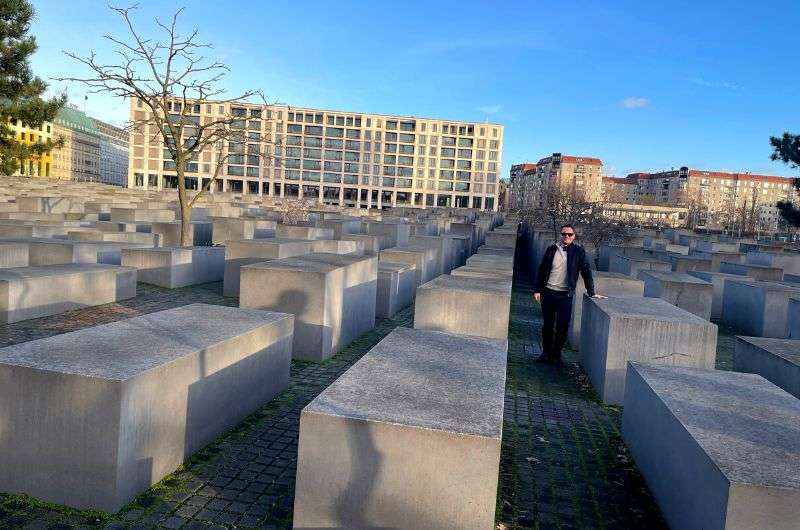
This memorial makes you feel things
Distance from previous stop: 2.5 km/1.6 mi, 29-min walk
Time spent here: 1 hour
The Memorial to the Murdered Jews of Europe isn't a historical monument in the traditional sense, but it serves as a harrowing reminder of the Holocaust's impact on the Jewish population in Europe during World War II. Specifically, it commemorates the 6 million Jews systematically exterminated by the Nazis. Just writing about it gives me an uneasy feeling, so you can imagine the kind of emotions the actual memorial evokes.
Visiting the site, I experienced a somber atmosphere, akin to the feelings at the 9/11 memorial, but that's precisely why I think the memorial is so effectively designed. It consists of 2,711 concrete blocks of varying heights, arranged on an irregular, undulating ground. After enduring an extremely long of people trying to get in, you can walk among these blocks, absorbing the profound ambiance. There's also an accompanying text with the exhibit, but personally, I didn’t find it as compelling as the memorial itself.
Day 1, stop 7: Deutschland Museum
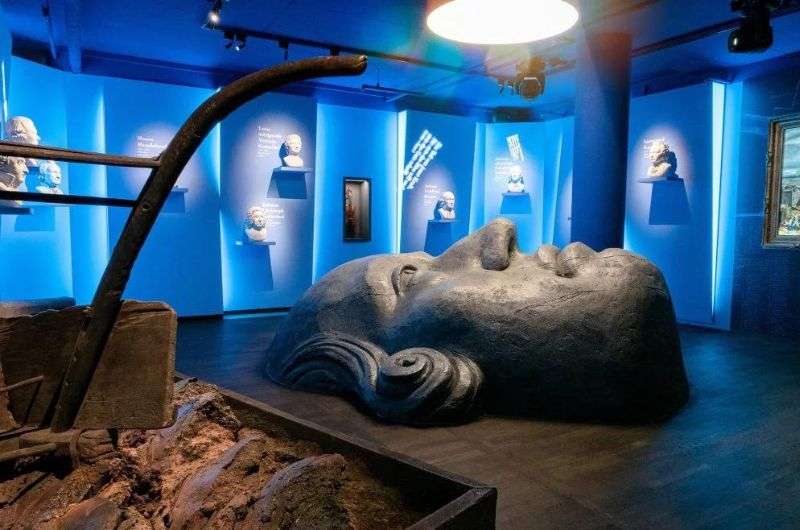
Distance from previous stop: 1.1 km/ 0.7 mi, 10-min walk
Time spent here: 1 hour
Your final stop in Berlin for today will be the interactive museum of German history, the Deutschland Museum. First opened in 2023, you could say it's a brand-new attraction. The tour starts with the Battle of the Teutoburg Forest, which occurred in 9 AD.
The museum's slogan is "2,000 years in one hour." So, it's like a high-speed historical journey—ideal for history buffs and newbies alike, this place offers a whirlwind tour through the ages. Deutschland Museum's packed with cool stuff, like the changing map from the fall of the Roman Empire up to the year 1005. It's all very interactive, they even work with scents! The videos are smart, snappy, and hilarious—just my cup of tea.
The museum doesn't just skate over the surface; it dives deep. World War I? You're in the trenches. And they don't tiptoe around World War II, they tackle it head-on, unlike some other countries I won't name (cough, Japan, cough). And the era of West and East Berlin is depicted like the flip sides of a card. Overall, they really played well with the concept, and for me, it's awesome.
- Deutschland Museum official website
- Open daily 10 am–8 pm
- Tickets cost EUR 11 to EUR 21 (They are offering less popular entry times at reduced prices)
Day 2 of Berlin itinerary: In the footsteps of World War II
Caption: Day 2 of a 4-day Berlin itinerary with even more museums (see it on Google Maps)
Main sites visited on day 2: Topography of Terror Museum, Berlin Story Bunker, Checkpoint Charlie Museum, Berlin Jewish Museum, Deutsches Technikmuseum, Kaiser Wilhelm Memorial Church
Restaurant tips: Restaurant Tim Raue | Sorrel
Hotel recommendations: KPM Hotel & Residences
Further reading: 5 Reasons Why You Have to Visit Hitler’s Eagle’s Nest
Day 2, stop 1: Topography of Terror Museum (Topographie des Terrors)

Distance from KPM Hotel & Residences: 4.6 km/2.8 mi, 16-min bike ride or 1-hour walk
Time spent here: 1.5 hours
Kicking off today's Berlin exploration is another museum visit, this time to the Topography of Terror Museum. The name alone sets the mood for a thought-provoking morning, right?
Located on the former site of the Nazi secret police and SS headquarters, this museum throws you deep into the dark waters of the Nazi regime's history. The exhibit's lineup? A sobering collection of documents, photographs, and relics that paint a picture of Nazi-instigated terror, persecution, and the unspeakable horrors of genocide.
For those who snoozed through history class, here's a crash course: The Nazi regime, masterminded by the infamous Adolf Hitler, was big on the whole Aryan racial superiority spiel. It systematically targeted Jews and other groups deemed 'racially inferior.' The museum does a great job of giving you a clearer picture of this bleak chapter in history.
Entry to the Topography of Terror Museum is free, and you can choose between a traditional guided tour or an audio guide. We went with the audio guide, which gave us quite a lot of information, but there's much more in the exhibitions worth reading. The museum also includes an outdoor exhibition featuring remnants of the Berlin Wall.
- Topography of Terror Museum official website
- Open daily 10 am–8 pm
- Free admission
Day 2, stop 2: Berlin Story Bunker
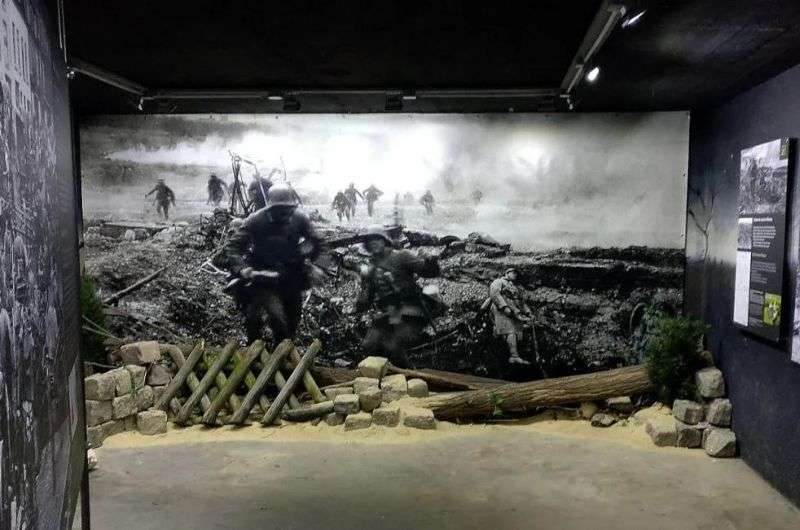
Distance from previous stop: 0,75 km/0.46 mi, 10-min walk
Time spent here: 2–4 hours
There's no chance of parking at the Berlin Story Bunker, so it's best if you walk or use a bike at this point.
The museum is on the site of what was originally a bunker, built during World War II as an air-raid shelter. Over the years, it served many a purpose, including storing fruits and vegetables, whcih was probably the least exciting of them all. Most importantly, it was the last stronghold of resistance for Hitler and his so-called 'death spot.' Spoiler alert: the guy actually checked out about 1 km away. But hey, who's counting meters when you're in the history-selling business? Marketing, I get it.
Fast forward to today, and voilà – we've got ourselves a museum. This place takes you on a rollercoaster ride through the life and times of Adolf Hitler, arguably the most infamous German to ever walk the Earth. Did you know that no person or period in human history has been more studied than Adolf Hitler? What they say about bad press must be true! It's not every day you see a life journey mapped out so vividly—from baby booties to the bunker. It's an exhibit that's both intriguing and interactive, showcasing the rise and fall of history's most notorious villain.
Tip: And speaking of Adolf (again), I recommend you read my article "5 Reasons Why You Have to Visit Hitler’s Eagle’s Nest" and then head straight there (well, not straight there, but after you’re done with your 4 days in Berlin).
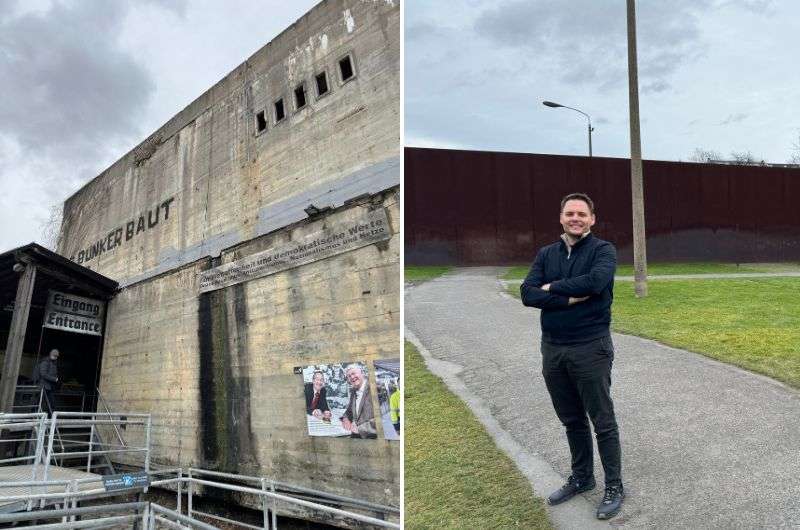
This place kept me entertained for hours @ Berlin Story Bunker
Definitely take an audio guide. In my opinion, it's one of the best explanations of how Nazism originated and what preceded it. It beautifully demonstrates how a dictatorship can creep in quietly, and if not stopped early, it can grow into Nazi Germany or today's Russia. It's apparent how it's most supported by ignorant people and poor regions hoping for change. It's interesting that nobody really opposed him. Before the war, he had total support. They eventually tie it perfectly to the current situation in Russia.
For me, it was a really awesome experience. Expect to spend a few hours there. The audio-guided tour has about 45 stops and I listened patiently to each and every one of them.
Recommendation: I wouldn't take the kids inside. After all, it's a bunker underground, and it's a bit scary, and the topic is not exactly child friendly.
- Berlin Story Bunker official website
- Open daily 10 am–7 pm
- Tickets cost EUR 12
Day 2, stop 3: Checkpoint Charlie Museum (Mauermuseum – Museum Haus am Checkpoint Charlie)
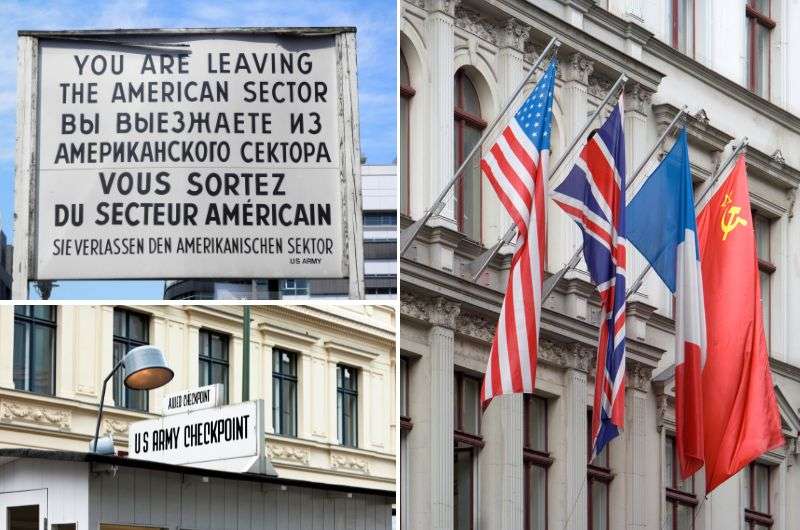
Checkpoint Charlie Museum—I wasn’t very impressed, sorry
Distance from previous stop: 1 km/0.62 mi, 14-min walk
Time spent here: 20 min
I'll include the Checkpoint Charlie Museum on the itinerary, because I feel like you’d go anyway even if I said it’s crap, because FOMO. But personally, I've never understood the hype around this place. Seriously, it seems like Checkpoint Charlie is known by practically everyone, while other sites, which I think are better and more significant, fall into unfortunate obscurity.
Checkpoint Charlie was simply a checkpoint in Berlin during the Cold War. It was one of three crossing points between East and West Berlin. Well, I can imagine that several tense and escalated situations occurred there, given that crossing from one part of Berlin to the other was practically impossible. Except for the 2.7 million Germans who managed to do it, in one way or another (probably not by walking through the checkpoint). As they say, where there's will, there's a way.
It's a spot to snap a photo and then continue on your sightseeing journey.
Day 2, stop 4: Berlin Jewish Museum (Jüdisches Museum Berlin)
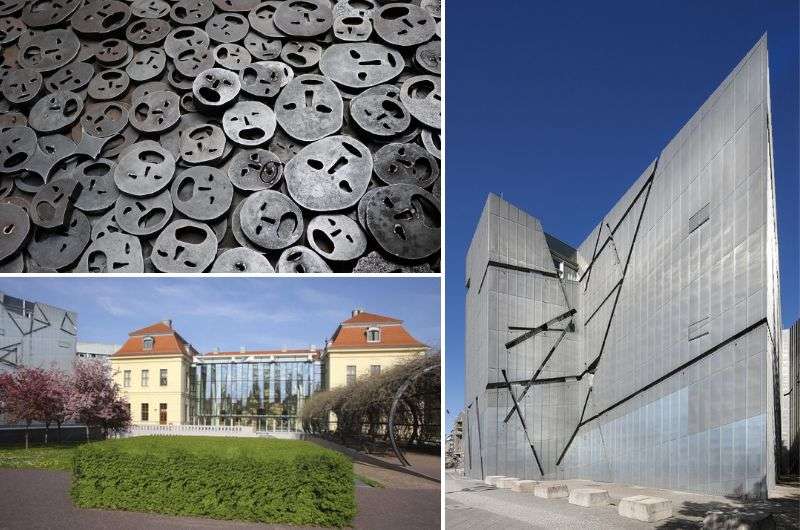
Distance from previous stop: 0.8 km/0.49 mi, 11-min walk
Time spent here: 2–3 hours
The Berlin Jewish Museum is dedicated to the history and culture of Jews in Germany. I know, you wouldn't have guessed that from the name. Once you lay eyes on its quirky architecture, you'll know you're not in for the usual museum tour.
The main exhibit is on the house—no entry fee. Trust me, even the free part is enough to keep you hooked for a good few hours.
It's something completely different than, say, the Topography of Terror Museum, where you feel the horror of history emanating from every corner. Here, it's more about engaging your senses and emotions. You’re not just walking through a museum; you’re walking into the lives of people who had their worlds turned upside down. The entire concept is designed to help you vividly imagine what people at that time had to endure. The museum's imaginative architecture plays into this, adding the right atmosphere to the experience.
- Jewish Museum official website
- Open daily 10 am–7 pm
- Core exhibition free entrance
Day 2, stop 5: Deutsches Technikmuseum
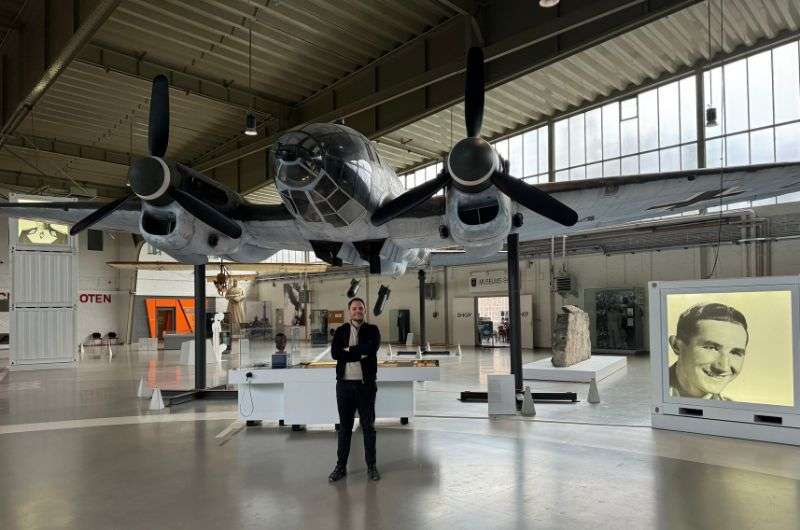
Technical Museum of Berlin, where Jan was like a kid in a candy store
Distance from previous stop: 1.5 km/0.93 mi, 22-min walk
Time spent here: 4–6 hours (!)
If you're a curious techie, don’t miss the chance to add this museum to your itinerary. The German Museum of Technology focuses on showcasing Germany's technical and industrial heritage. You'll see a wide array of technological, scientific, and industrial innovations from the past to the present. I can see some of you yawning just about now, but holy aviation, I loved it!
Each year, about 600,000 people visit this museum. It manages over 100 technical collections from past centuries. In other words, the collection is incredibly extensive, and I can imagine spending a good 6 hours here if I were a transport history enthusiast. But I'm not, so for me, it's more like 4 hours. Moreover, some exhibits don't have English descriptions, so if you don't know German, you'll miss out on a lot of reading.
Inside, there's also a restaurant where you can grab a meal or at least a coffee after an exhaustive exploration of the history of technology. It’s also the perfect spot where your significant other can flip through her Instagram while you take way too long at the “Historical Brewery” exhibit.
- Deutsches Technikmuseum official website
- Open daily 9 am–5.30 pm, weekend and holidays 10 am–6 pm
- Tickets cost EUR 12
Tip: Feel like if I drag you to one more museum, your head might explode? But that's one of the main reasons why Berlin is so interesting! So, I'd say power through it. And afterwards, maybe you can venture out into nature and explore the lakes in Bavaria or visit other German cities where it's not all about museums. Hamburg and Nuremberg come to mind.
Day 2, stop 6: Kaiser Wilhelm Memorial Church (Kaiser-Wilhelm-Gedächtniskirche)
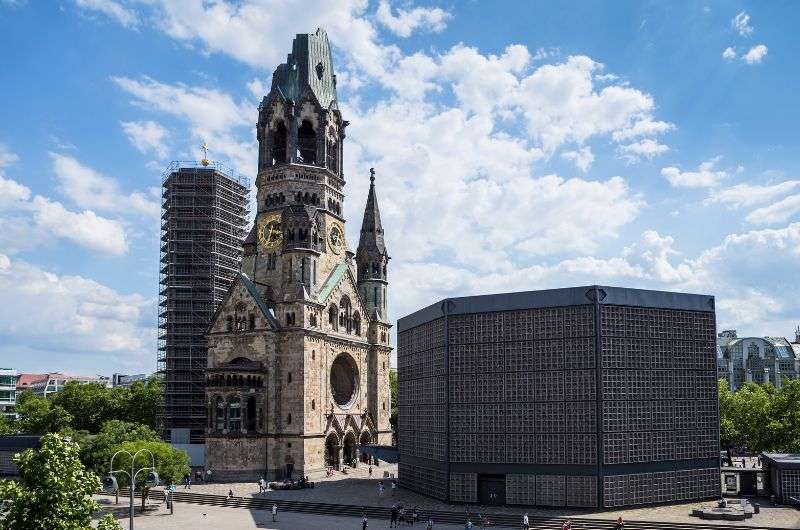
Kaiser Wilhelm Memorial Church, an imaginative way to preserve a damaged church
Distance from previous stop: 3.4 km/2.1 mi, 10-min drive or 15 min by public transport
Time spent here: 4–6 hours
The Kaiser Wilhelm Memorial Church is worth a visit, not just for what it is, but for what it represents. Emperor Wilhelm II commissioned the church in memory of his grandfather, Wilhelm I, the first German Emperor and King of Prussia.
The church itself is fascinating, but what intrigued me even more was the decision to preserve the “damaged” church. During the bombing of Berlin in World War II, the church was heavily damaged. After the war, a new modern structure was added to the remnants of the old tower. This beautifully reflects the German mentality of owning their mistakes. And that I can respect.
The church is also worth seeing from the inside. There are beautifully preserved mosaics and a part of the original bell tower.
- Kaiser Wilhelm Memorial Church official website
- Open daily 10 am–6 pm
- Free entry
Day 3 of Berlin itinerary: Monuments, museums, and squares
Day 3 of a 4-day Berlin itinerary exploring other historically significant places in Berlin (see it on Google Maps)
Main sites visited on day 3: Berlin Wall Memorial, Tear Palace, BebelPlatz and Neue Wache, Gendarmenmarkt, Museum Island, Domkirche, New Museum, Fernsehturm and Classic-Remise
Restaurant tips: Chiaro | Restaurant Maximilians Berlin
Hotel recommendations: KPM Hotel & Residences
Further reading: Hamburg | Dresden | Salzburg
Day 3, stop 1: Berlin Wall Memorial (Gedenkstätte Berliner Mauer)
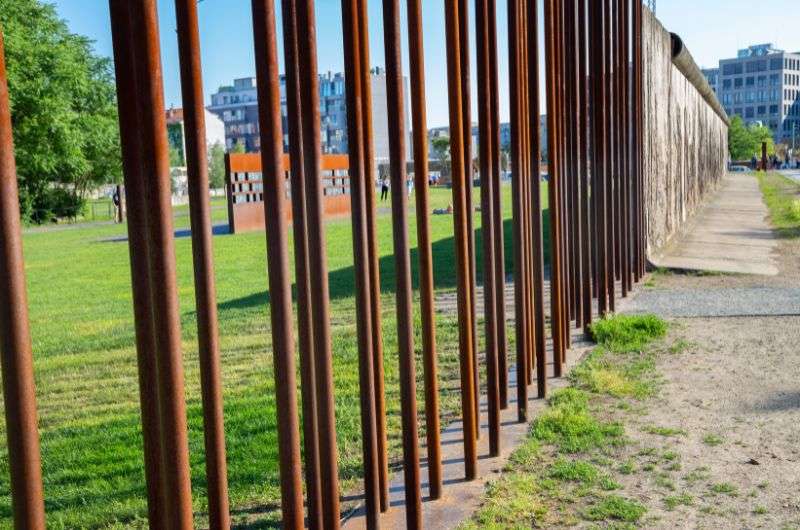
Memorial to the division of Berlin by the Berlin Wall
Distance from KPM Hotel & Residences: 5.2 km/3.2 mi, 20-min drive or 30 min by public transport
Time spent here: 1 hour
The Berlin Wall Memorial is another site commemorating the division of Berlin by the Berlin Wall and the deaths that occurred there. Established in 1998, it includes the Chapel of Reconciliation, The Berlin Wall Documentation Centre, a 60 m (200 ft) section of the former border, the Window of Remembrance, and a visitor center.
Very interestingly, this memorial shows you the “no man's land” section that was between the two sides of the Berlin Wall, and is perhaps the only place where you can see how wide this space was. Definitely worth a visit to fully grasp the concept. It's pretty clear that Berlin is filled with memorials related to the Berlin Wall, and after a while, they all start to feel the same to me. A bit morbid are the photos of the 132 people who died in the no man's land.
In the visitor center, there are flyers and informative videos available. If you plan to watch a video, be mindful of what time you arrive at the Berlin Wall Memorial. The English version is shown at half past the hour, while the German version with English subtitles is played at the hour. If you want to learn more about the history, I recommend paying for a guided tour, which costs EUR 3.50 per person.
- Berlin Wall Memorial official website
- Open Tuesday to Sunday 10 am–6 pm
- Free entry, guided tour costs EUR 3.50
Day 3, stop 2: Tear Palace (Tränenpalast)
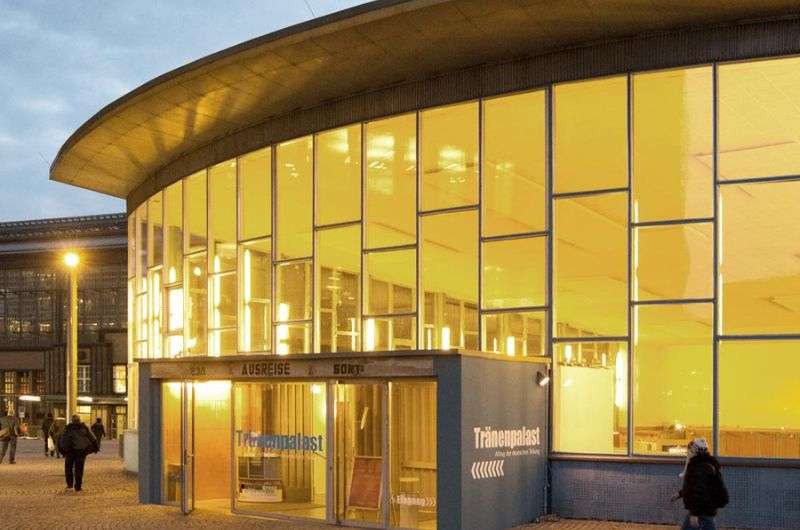
Picture ofr Tear Palace from en - Stiftung Haus der Geschichte (hdg.de)
Distance from previous stop: 2 km/1.3 mi, 27-min walk or 8 min on a bike
Time spent here: 30 min
Tear Palace rightfully earned its name, being a former border crossing between East and West Berlin. Located at the Berlin Friedrichstraße station, it was operational from 1962 to 1989. Here, people could leave the GDR, but only if they successfully passed luggage and passport checks. This place also witnessed many dramatic moments and tears as people bid farewell to family and friends before entering the Western bloc. Those who stayed on the other side often never saw their relatives again. That's how this place got its name. A terrible thought, thank goodness for Schengen and the free movement in Europe.
Thankfully, the past is in the past, and Tear Palace now serves as a museum with exhibitions on Berlin during the Cold War and the subsequent reunification process as part of the permanent exhibition "Site of German Division". On display are interviews with eyewitnesses and 570 original items documenting the operation of Tear Palace throughout the period.
Like Auschwitz, this place also has a heavy and oppressive atmosphere. As you walk down a narrow corridor past open suitcases with original belongings, you can’t shake the feeling that a customs officer might pop out at any moment for a surprise inspection. The preserved period signs add to the authenticity.
- Tear Palace official website
- Open Tuesday to Friday 9 am–7 pm, Saturday and Sunday 10 am–6 pm, closed Mondays
- Free entry
Day 3, stop 3: BebelPlatz and Neue Wache
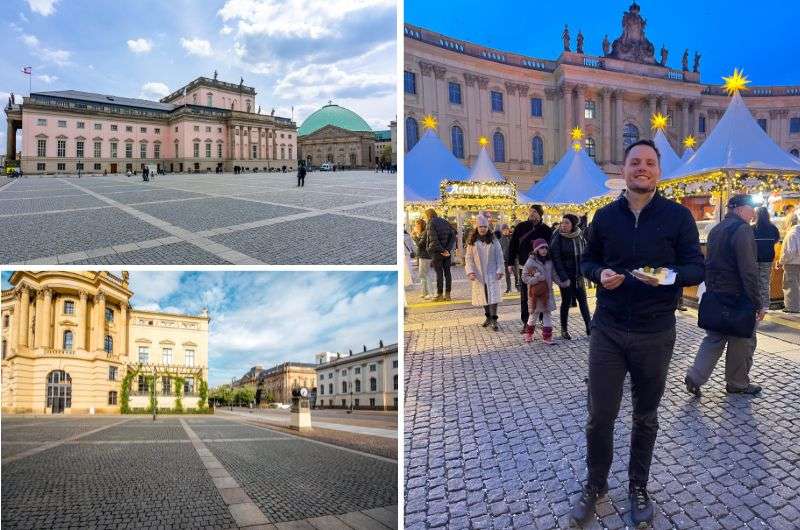
Christmas markets are also held at BebelPlatz every year
Distance from previous stop: 0.85 km/0.53 mi, 12-min walk through Unter den Linden
Time spent here: 45 minutes
Continue on your itinerary through Berlin with a wander around Bebelplatz—a square on Unter den Linden in the center of Berlin. I need to tell you about two significant historical events that occurred here so you aren’t just staring at this place all knowledgeless.
First, Bebelplatz was constructed in 1740 as a jewel of Prussia during the Enlightenment. It was originally named Kaiser Franz Joseph Platz but was later renamed after August Bebel, the co-founder of the SPD aka Social Democratic Party. As you might have guessed, 'Platz' means ‘square’ (as in ‘town square’) in German.
The second event is a bit more somber. On May 10, 1933, the Nazis burned 20,000 books here. That evening, books that were considered subversive were ceremonially torched, a move intended to warn all opponents of the Nazis. So, a typical Friday night party... To ensure we don't forget this event, there's a memorial called the Sunken Library—a small 50 m2 (538 ft2) library sunk into the ground with empty shelves.
We'll stay on the theme of war a bit longer; actually, it seems to be a recurring theme throughout our visit to Berlin. That’s not a coincidence, so you really need to come prepared for it when visiting Berlin. There’s not escaping it, honestly.
Just a short distance from Bebelplatz is Neue Wache (New Guard House), a memorial for the victims of war and dictatorship.

The Neue Wache memorial
The funny aspect of this site is how, throughout German history, the significance of the memorials changed according to the current political situation. It was always a memorial to victims, just of different events. Until 1918, it was a memorial to the Wars of Liberation, a reference to the Napoleonic Wars. Then, from 1931, it became a memorial to World War I, and finally, since 1993, a memorial to World War II. Inside the memorial is the "Mother with her Dead Son" pieta, which has become a symbol of the tragedies of life lost due to war and tyranny. For me, it's very moving, no matter which victims it’s for.
- BebelPlatz official website and Neue Wache official website
- Open 24/7
- Free entry
Day 3, stop 4: Gendarmenmarkt
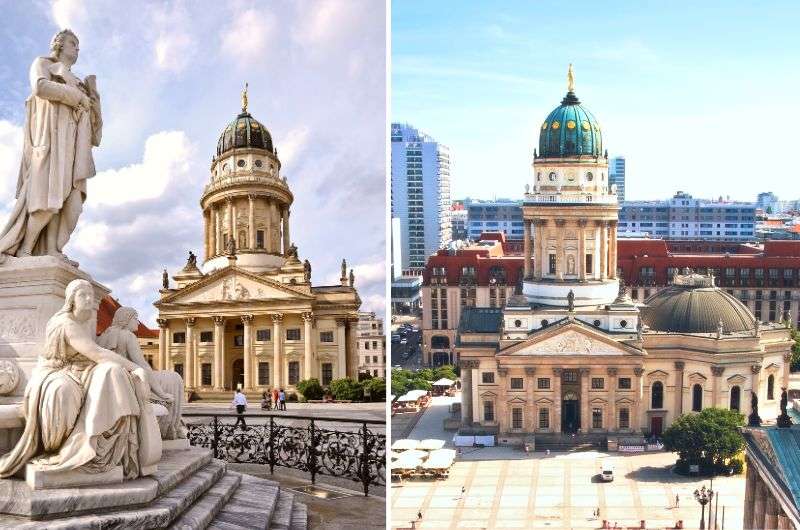
Gendarmenmarkt: You’re not seeing double, it’s the twin “cathedrals”! French on the left, German on the right
Distance from previous stop: 0.6 km/0.37 mi, 8-min walk
Time spent here: 30 min
You'll be surprised, but the next stop is a square without 'Platz' in its name. Gendarmenmarkt is renowned primarily for the three buildings it hosts: The German and French Cathedrals and the Konzerthaus (concert hall). These structures transformed an otherwise unremarkable square into one of Berlin’s most beautiful spots. Originally serving as a market named Esplanade, then Lindenmarkt, and later Neuer Markt, it was renamed Gendarmenmarkt in 1799. It seems this last name will stick, but don’t hold your breath!
The twin cathedrals, the German and French Cathedrals, were constructed around 1705. The original churches didn't have the two splendid towers that were added later to enhance the square's appeal. In my opinion, they succeeded brilliantly; it's genuinely a marvel, and I didn’t know where to look first.
The Konzerthaus is slightly newer. It was built between 1817 and 1821 on the foundations of the burnt-down National Theatre. During World War II, the square and its buildings were partially destroyed, but thanks to some clever German hands, you won’t notice any damage today. The square was renamed in 1950 but reverted to its original name after the fall of the Berlin Wall (yes, Berlin's history heavily influences everything).
- Gendarmenmarkt official website
- Open 24/7
- Free entry
Day 3, stop 5: Museum Island (Museumsinsel)
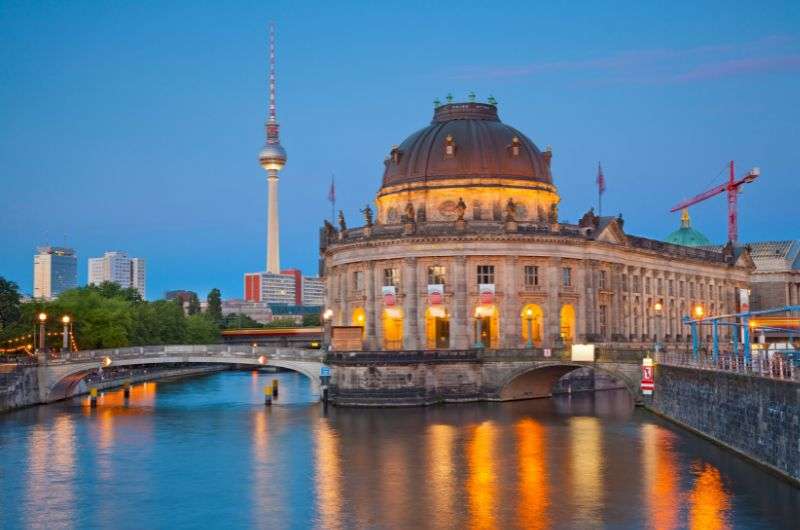
An island full of museums
Distance from previous stop: 1 km/0.6 mi, 13-min walk
Time spent here: 1–4 hour (depends on how long you spend in the museums)
Museum Island is something extraordinary, I haven’t seen anything like it anywhere else in the world. Located on the Spreeinsel, this island hosts five different museums and one gallery. So, if you're a museum enthusiast, I recommend setting aside plenty of time for this stop on the itinerary.
The buildings on the island were erected during the Prussian reign. In 1999, Prussia's effort was rewarded with a UNESCO World Heritage status, ensuring these museums will stick around forever. If Museum Island rings a bell, it might be because of the world-famous bust of Nefertiti. A 3000-year-old gem right in the heart of Berlin that’s simply stunning.
The genesis of the museums on the island dates back to 1830 with the opening of the first Altes Museum (Old Museum). Over the next 100 years, other museums and galleries were added, and since the 1870s, the island has been known as nothing but Museum Island.
Besides the Altes Museum, the island houses the Neues Museum, Alte Nationalgalerie, Bode Museum, and in my opinion, the best of them, the Pergamon Museum. If you only have the time or desire for one museum (who could blame you), Pergamon should be the clear winner... that is, if you visit in the future. Unfortunately, Pergamon’s been under complete renovation since October 2023, with a reopening planned for 2027. In the meantime, visit the Neues Museum and return after 2027 for a little do-over.
- Museum Island official website
- Open Tuesday to Sunday 10 am–6 pm, Thursday 10 am–20 pm
- Tickets start at EUR 24
Day 3, stop 6: Domkirche (Berlin Cathedral)
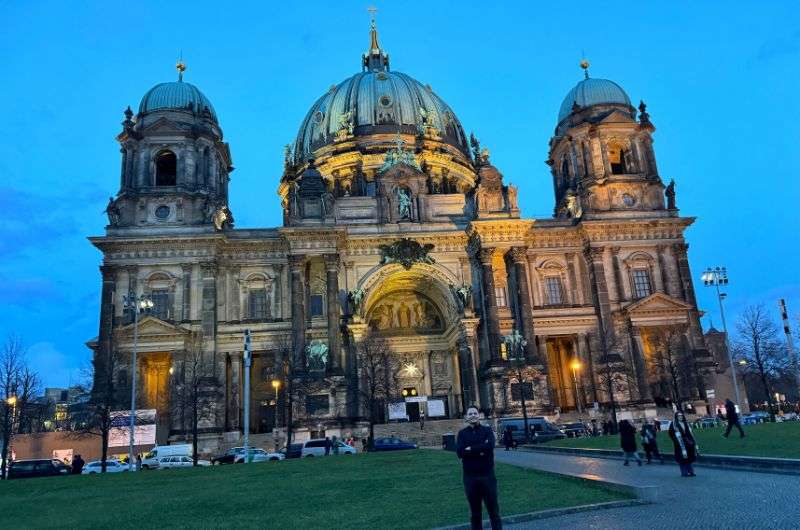
Look how huge this building is compared to me!
Distance from previous stop: 0
Time spent here: 30 min
You literally won’t be able to overlook the majestic Berlin Cathedral, a structure that feels exponentially grander in real life than any picture can convey. It’s located on Museum Island, so it’s a site you'll naturally pass by, and I highly recommend stepping inside once you are done with your oohs and ahs while staring at the exterior.
To me, it feels like a larger twin of the Reichstag. Some churches look smaller on the inside, others larger, but the Berlin Cathedral definitely falls into the latter category. It's a burial site for Prussian kings and German emperors.
You can even climb up to the dome's tower, which is surprisingly high. Be warned, though—it's 267 steps to the top. So, if your fitness level is on par with a couch potato, maybe give it a miss.
- Domkirche official website
- Opening hours depend on events in the Cathedral, so it’s always better to check the website before you visit
- Tickets start at EUR 10
Day 3, stop 7: Fernsehturm (TV Tower)
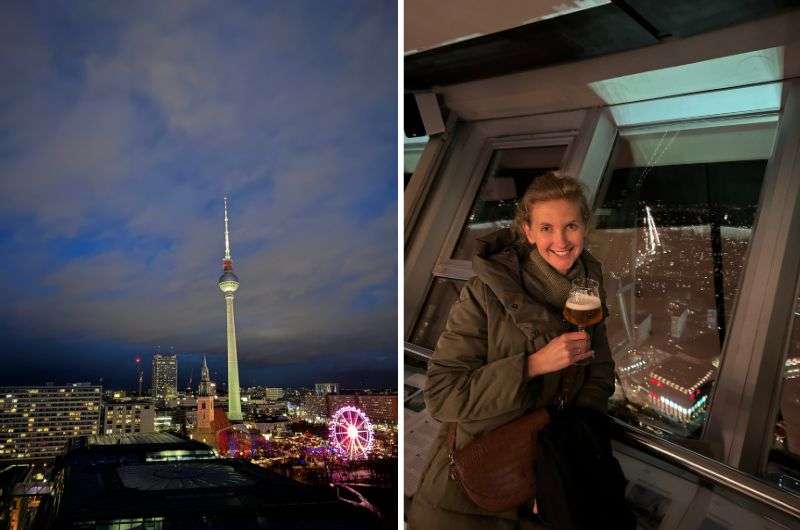
Beautiful night view of Berlin and a good beer at Fernsehturm
Distance from previous stop: 0.85 km/0.53 mi, 12 min by walk
Time spent here: 1 hour
Fernsehturm is an unmissable TV tower smack in the middle of Berlin--like it’s impossible to overlook. It's one of the city's main symbols, and there’s an observation deck with a bar inside of it, making it an obvious stop for you on any Berlin itinerary. The tower is a relic of the Cold War, representing the divide between East and West Berlin, so you can pretend you’re there for the significance and not just the beer (but we all know you’re lying).
You'll want to book tickets in advance. We tried our luck without a reservation last time we went, only to find it was booked solid until the next evening. Lucky for us, we weren’t trying to visit on our last night in Berlin, and they let us in 1.5 hours earlier than our scheduled time the next day (kudos and extra brownie points for that, guys!).
Berlin’s Fernsehturm is 368 m (1,207 ft) tall, making it the tallest structure in Berlin. Riding the elevator up, you can see how high you're going. It travels at 4 m (13 ft) per second, so the whole journey takes about 50 seconds. Now, if you're scratching your head wondering how that math doesn't add up to 368 m, don't worry, I'm not daft. The elevator drops you off at the observation deck, which isn't at the top of the tower.
The observation deck might not feel all that high, especially for someone like me who's fearless. But at the top, you can grab a surprisingly decent beer at the bar and the evening view over the city is worth it too. You might just see a sea of lights without knowing what you're looking at, but trust me, it's a pretty sight.
- Berliner Fensehturm, official website
- Open daily 10 am–23 pm
- Tickets start at EUR 22.5
Day 3, stop 8: Classic-Remise Berlin

I had a great time at Classic-Remise Berlin
Distance from previous stop: 8.7 km/5.4 mi, 21-min drive or 41 min by public transport
Time spent here: 1.5 hour
If you've got the energy for one more outing, I highly recommend checking out the Classic-Remise Museum. It's a bit out of the city center, but if you're a car enthusiast, you're going to fall in love with this place. And if you're driving, you can park right in front of the museum.
What's cool about this place is that it's not just a museum; it's also a car repair shop. Their car collection is pretty impressive, and it's great that they actually display the cars for everyone to enjoy in sort of a showroom-style setup.
Don't expect to see any boring Fords here. There are loads of Jaguar E-Types (which, by the way, is my dream car for road trips), so I felt like a kid in a candy store. Too bad the cars aren't priced like candies. Besides Jaguars, there's a rich collection of Ferraris and even a Bugatti Veyron. It's fascinating how they blend the new models with their ancestors, the vintage cars. BMW fans rejoice—you'll find the first M3 here, too. They only showcase the cool cars, so no time wasted on boring models.
The exhibit is free, so why think twice? Gather your remaining strength and head over. May the force and scent of gasoline be with you.
- Classic Remise official website
- Open Monday to Saturday 8 am–8 pm, Sunday and Holiday 10 am–20 pm
- Free entry
Day 4 of Berlin itinerary: To Berlin and beyond
Day 4 of a 4-day Berlin itinerary (see it on Google Maps)
Main sites visited on day 4: Charlottenburg, Potsdam and Sanssouci
Restaurant tips: Restaurant kochZIMMER
Hotel recommendations: KPM Hotel & Residences
Further reading: Neuschwanstein Castle
If your heart yearns for more German adventures and you fancy spending another day in Berlin (but not really in Berlin), you're in luck. Want a car for this part, as we're heading a bit outside Berlin. Don't worry, no more museums! ...For now.
Day 4, stop 1: Charlottenburg
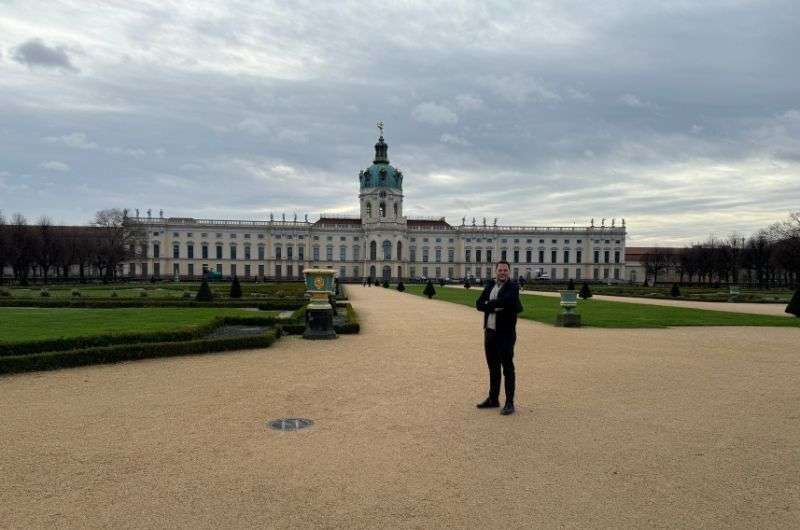
Charlottenburg—the largest castle in Berlin
Distance from KPM Hotel & Residences: 2.4 km/1.5 mi, 6 min car
Time spent here: 2 hours
In the Charlottenburg district lies the eponymous palace, the largest in Berlin. If you took my advice and are staying at the KPM Hotel & Residences, you won't have far to go since, like the hotel, the palace is in West Berlin. Long live the democratic bloc! Besides the palace, you can visit the park filled with stunning flowers and trees... What's a palace without a park, right?
The Charlottenburg Palace, initially built as a summer residence between 1695 and 1699, didn't retain its original form for very long. By 1701, it was expanded and transformed into a more splendid edifice. Guess where the architect of the time found his inspiration? That's right, Versailles. Because if there's anything the French excel at, it's building ostentatious palaces and losing wars. That same year also saw the completion of the huge dome towering over the palace's main entrance.
The palace, along with the entire district, got its name in 1705 following the death of Sophie Charlotte, the wife of the first Prussian king. The reconstruction process, with minor breaks, lasted about 100 years and ended in 1791 with the theater's completion.
This form endured almost two centuries until partial destruction during World War II. Post-war, the palace got a facelift and took on a new role as a museum. When you step in, you're greeted with a snazzy video, kind of like a “palace through the ages” montage, climaxing with the 1945 bombing by the allies. It's one of the more beautiful palaces in Germany, mostly because of the many lavish, gold rooms.
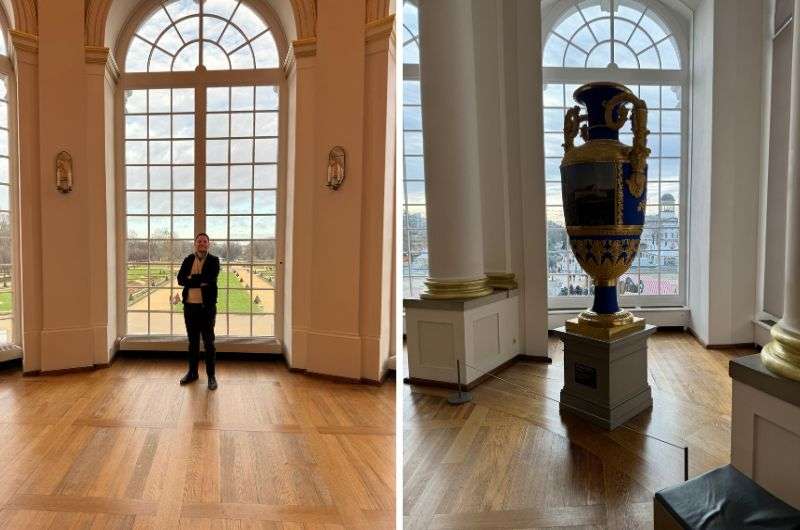
On a tour of Charlottenburg
For me, the second floor was definitely more interesting, especially from an informative standpoint. It offers well-presented information about the formation of Germany and the German nationality. Otherwise, it's a classic Baroque palace, with tons of wallpaper and paintings. It also illustrates the saying, "Most states have an army, but Prussia is an army that happens to have a state." If you're into gold and precious stones, you'll like it here. The exhibition currently boasts over 600 jewels and treasures.
A tour of the palace itself is about an hour long—don't forget to grab an audio guide. The gardens are enormous, so it's up to you whether you visit them and how much time you spend there.
Tip: If you're heading to Berlin in December, I have a little tip for you. The Charlottenburg Palace hosts annual Christmas markets, so drop by for some wurst and gluhwein (sausage and mulled wine). Now those are some German words that might come in handy!
- Charlottenburg official website
- Open November to March: Tuesday to Sunday 10 am–4:30 pm, April to October: Tuesday to Sunday 10am–4:30 pm
- Tickets cost EUR 12
Day 4, stop 2: Sanssouci (Schloss Sanssouci)
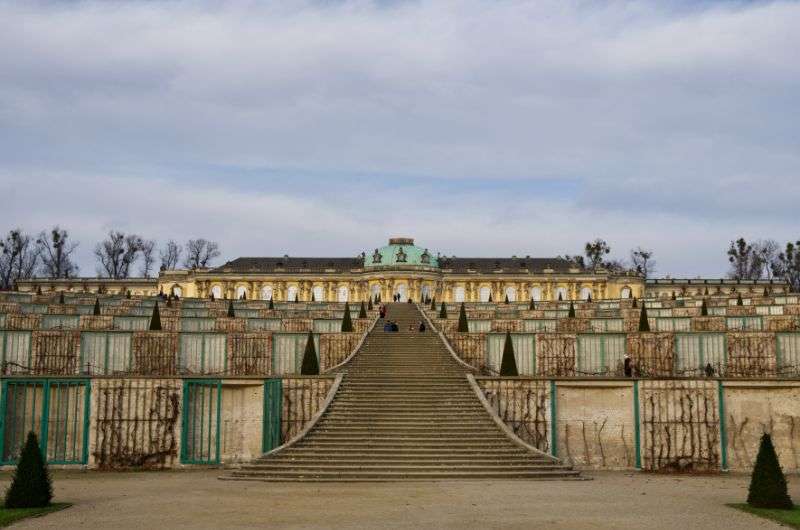
While you're in Berlin, head to Sanssouci
Distance from previous stop: 31.5 km/19.6 mi, 30-min drive
Time spent here: 1.5 hours
Half an hour west of Berlin lies the beautiful Sanssouci Palace—a UNESCO World Heritage site. The name, as you might have guessed, comes from French and means "without worry." It earned its name from Frederick the Great, who used it as a summer residence and saw it as an ideal for a carefree everyday life (sans souci).
The palace was constructed between 1745 and 1747. Although it was intended only as a summer residence, Frederick immediately fell in love with it and also used it as a retreat during tough times. He wished the palace to serve him alone, so during his lifetime, he didn't allow any renovations, envisioning that it would become uninhabitable by the end of his life. An interesting approach... quite selfish.
Here's a fun fact you can impress your significant other with: As you approach the palace through the park, notice that from no point in the garden can you see the whole palace in all its glory. The architect did this deliberately as a symbol of power. Like, you can see everything from the palace, but you can't see the palace itself. Frederick, however, didn't appreciate the gardens at all and was content with having nature on his terrace, with which he could connect. Like a crazy cat lady, but instead a crazy plant man.
Given that I'm writing about the palace, you'll understand that Frederick's wish to keep it to himself didn’t come true. The palace outlived Frederick, but it remained his final refuge, as he is buried in the vineyards located in the palace gardens, alongside his dogs.
- Sanssouci official website
- Open November to March: Tuesday to Sunday 10 am–4:30 pm, April to October: Tuesday to Sunday 9 am–5:30 pm
- Tickets cost EUR 22
Day 4, stop 3: Potsdam
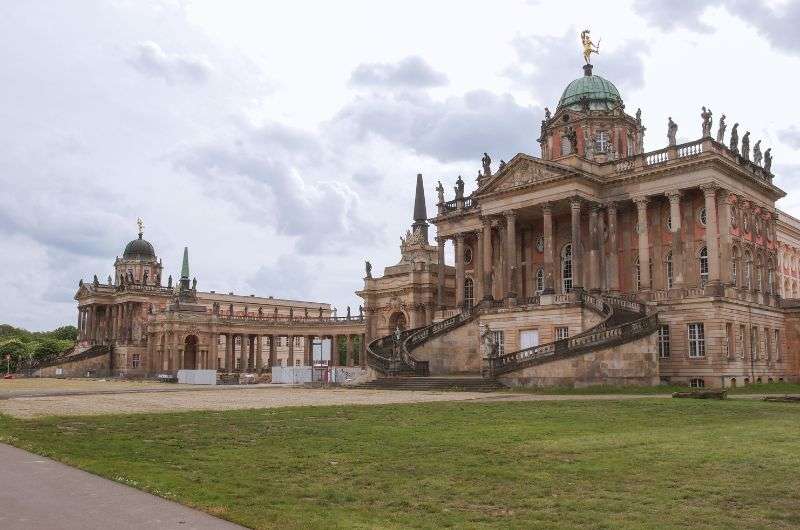
Wonderful Potsdam
Time spent here: 2 hours
Potsdam, the quaint town that plays host to Sanssouci Palace. If you're making the trip to the palace, I recommend stopping by to explore the streets for a bit.
Old Market Square is where it's at—a picturesque spot that could give any European square a run for its money. It's home to the City Palace, which got a total makeover after World War II left it in ruins. The grand reopening curtain lifted in 2014, and since then, it's been strutting its stuff.
Then there's the Barberini Museum, which popped up in 2017, flaunting art from all the big names. Monet, Picasso, van Gogh—it's like a who's who of the art world.
Now, if staring at paintings makes you yawn, Potsdam's got a plan B: the Filmmuseum. This place is a time machine back to the silent film era and walks you through a century of movie magic. But hey, if you've had your fill of museums in Berlin and are starting to feel like you're in a never-ending art history class, mix it up with a guided city tour. It's a brisk 2-hour stroll starting from the info center, perfect for soaking up Potsdam without overstaying your welcome.
FAQ 1: How many days should I spend in Berlin?
You can see all of Berlin's highlights in 3 days, but since you're already there, it's very worthwhile to add a day for Charlottenburg, a historic district in the western part of Berlin, and the city of Potsdam. I know it's not Berlin, but it's super close to Berlin, so it counts. Above all, there's the Sanssouci Palace, and you want to see that.
FAQ 2: Is Berlin a walkable city?
Berlin is one of those cities that can be more or less walked through entirely on foot. Since it's so packed with significant historical landmarks, there's essentially something worth seeing on every corner. Some landmarks, like the Stasi Museum, are a bit further from the center, but nothing dramatic. And if it ever gets too much for you, there are always scooters and bikes for rent, or alternatively, public transportation.
FAQ 3: What food is Berlin famous for?
In Berlin, as well as in the rest of Germany, the traditional dish is currywurst—curry sausage. But don't think that German food is just about sausages and beer. German food and drink culture is quite diverse.
The Berliner Pfannkuchen is typical for Berlin. It's a doughnut filled with jam or cream and usually sprinkled with sugar or icing.
FAQ 4: Where to eat in Berlin?
Berlin is a European metropolis, so you'll find a plethora of great restaurants there. Personally, I can recommend MonRaw Restaurant. They have really nice staff, good prices, and the food presentations and design are exactly to my taste. And, most importantly, the flavor of the food is epic. We had scallop ceviche and duck breast, and both were amazing. It doesn't happen to me very often, but I was impressed, and it’s one of the best restaurants I've ever been to.
This post contains affiliate links. I earn a small commission if you make bookings through my links, at no additional cost to you. Thank you for your support!


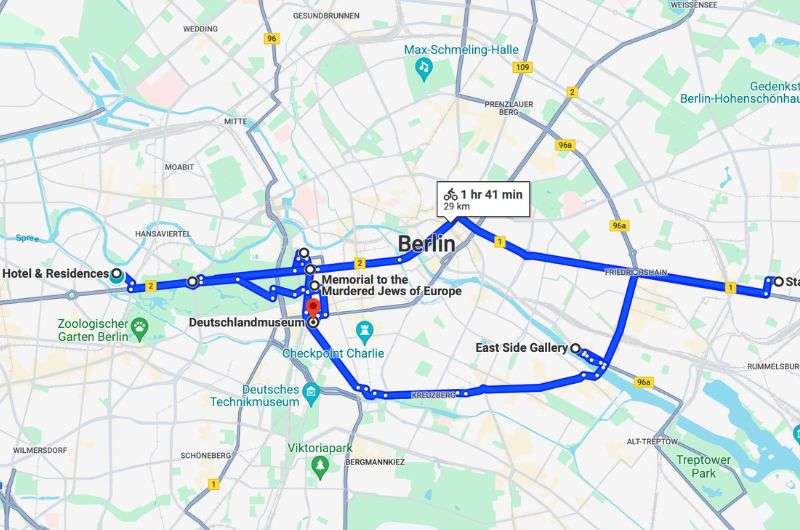
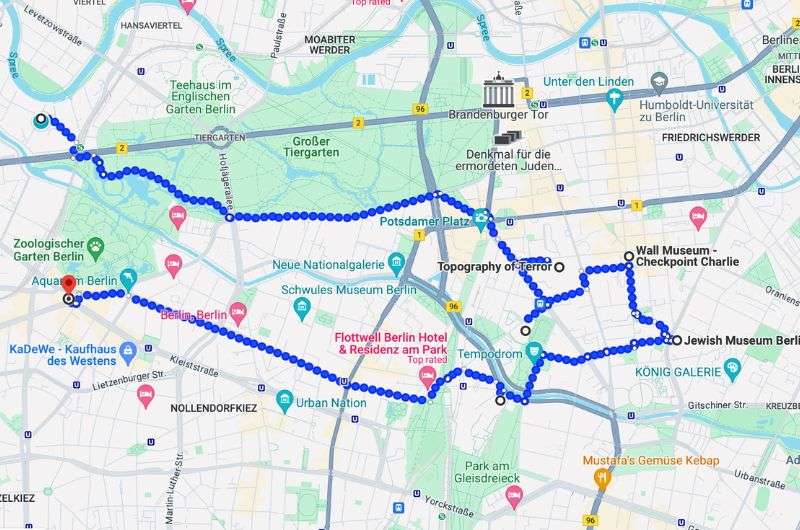
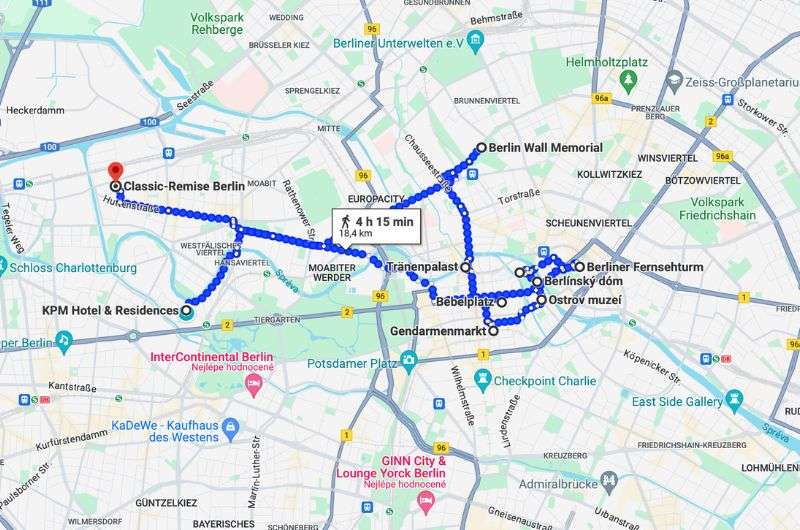
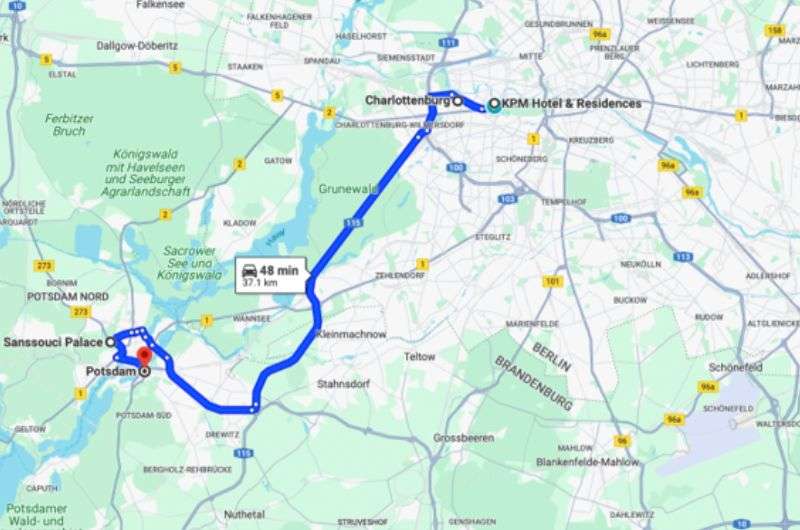
Comments | Thoughts? Give us a shout!
Recommended articles
They say that love goes through the stomach. But what I'm certain of is that getting to know a new culture goes through the stomach too. Germany is no exception. If you thought German cuisine was only about bratwurst and beer, you're mistaken.
I've put together a list of the 11 best lakes in Bavaria, and let me tell you, they offer way more than just crystal-clear waters and Instagram-worthy photo spots.
I hereby present to you a Detailed 1-day Dresden itinerary! It’s packed to the brims—you can stretch it out to 2 days by visiting all of the museums I mention (but no more than that, it’s not that amazing).
About me
Hi, I’m Jan. I travel fast and intensely, whether I’m exploring the buzz of Tokyo in 3 days or road-tripping through mountains and beaches on a 3-week Thailand adventure. And no matter where I am, you’ll always find me in a comfortable hotel at night and eating the best food.
If that sounds like your kind of journey, hop on board, and let’s explore the world together!
I started this blog after realizing how tough it can be to find reliable, authentic travel info. You wouldn’t believe how many “travel bloggers” never even visit the places they write about! On Next Level of Travel, you can count on my full honesty and insights drawn from my firsthand experiences.
More about meHere’s the deal: not every destination is all superlatives and unicorns. I’ll let you know if a tourist attraction isn’t worth your time, like skipping overrated stops in my 2-week Spain itinerary. And when I find something truly special—like the perfect mix of culture and nature in Cape Town—you can trust that it’s worth adding to your itinerary.
Next Level of Travel s.r.o.
ID: CZ07036612
Adress: Voctářova 2449/5, Praha, Czech Republic
Created by myTimi